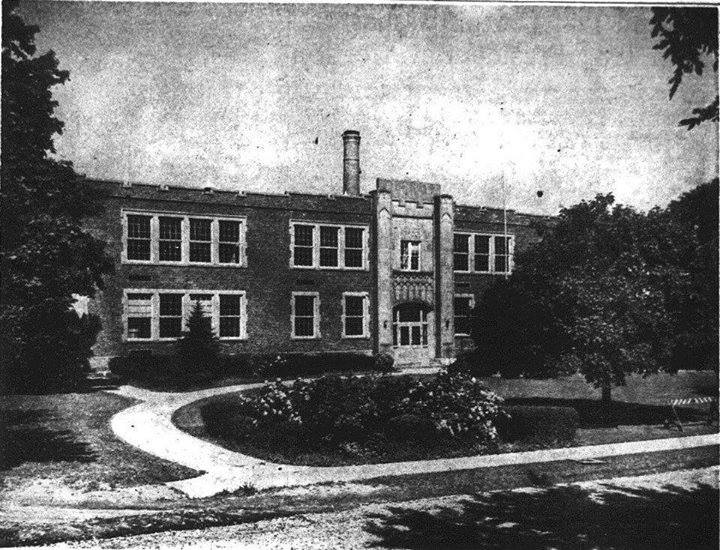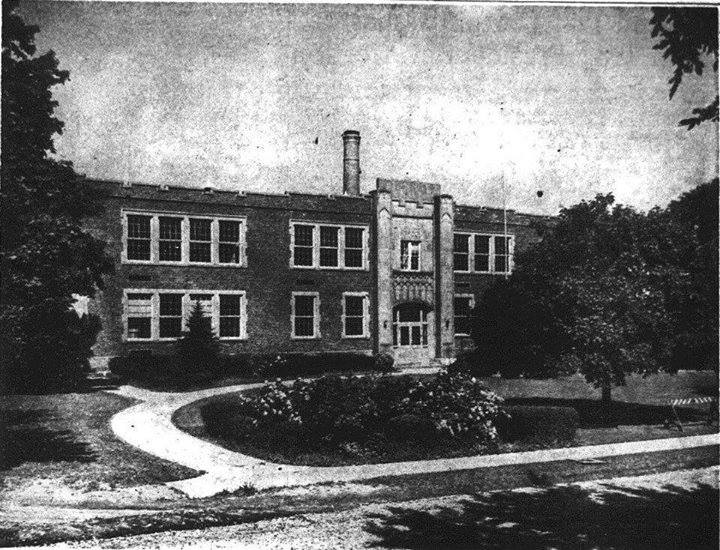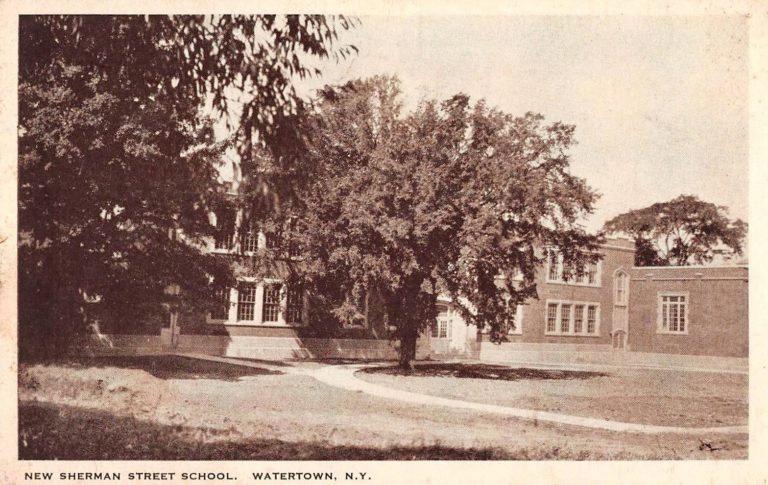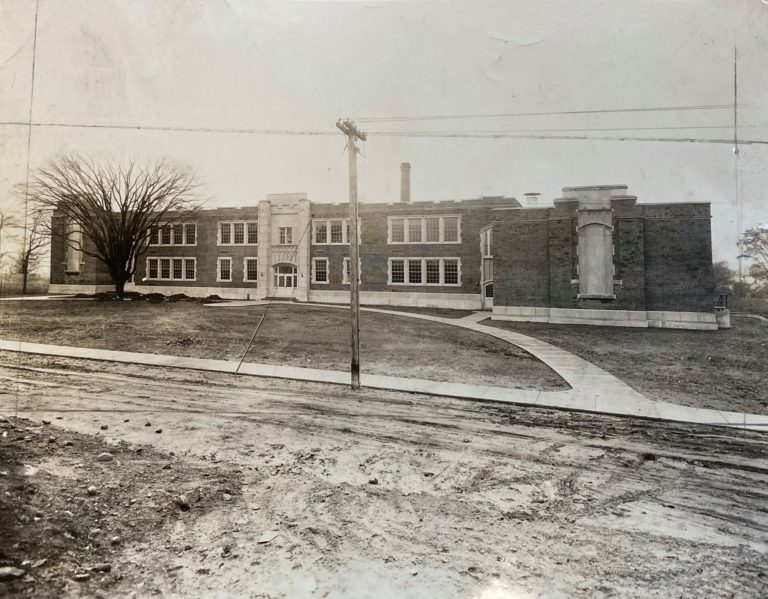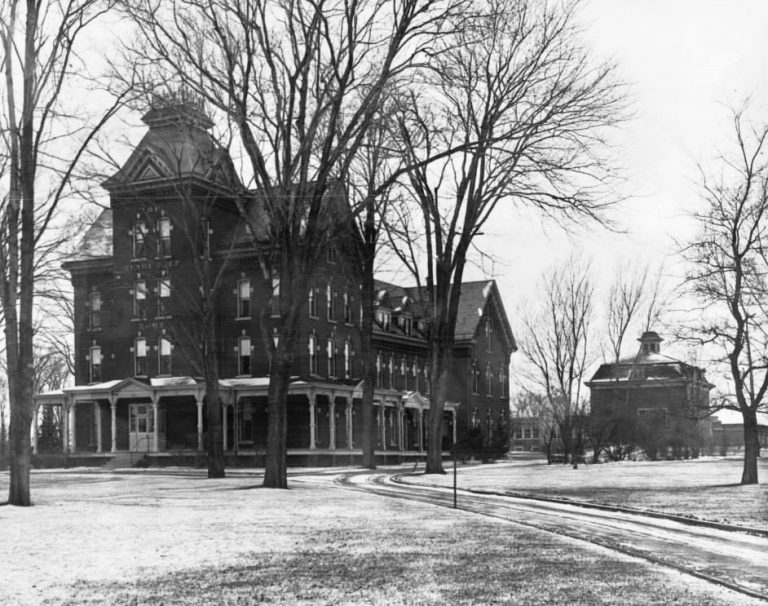5th Ward School Officially Becomes Sherman Street School
Back in the 1920s, before the Sherman Street School was built, there seemed to be no shortage of schools in the city. While many were consolidated through the years and later closed, some, such as Sherman, continue to serve their original intent within the community as an elementary school.
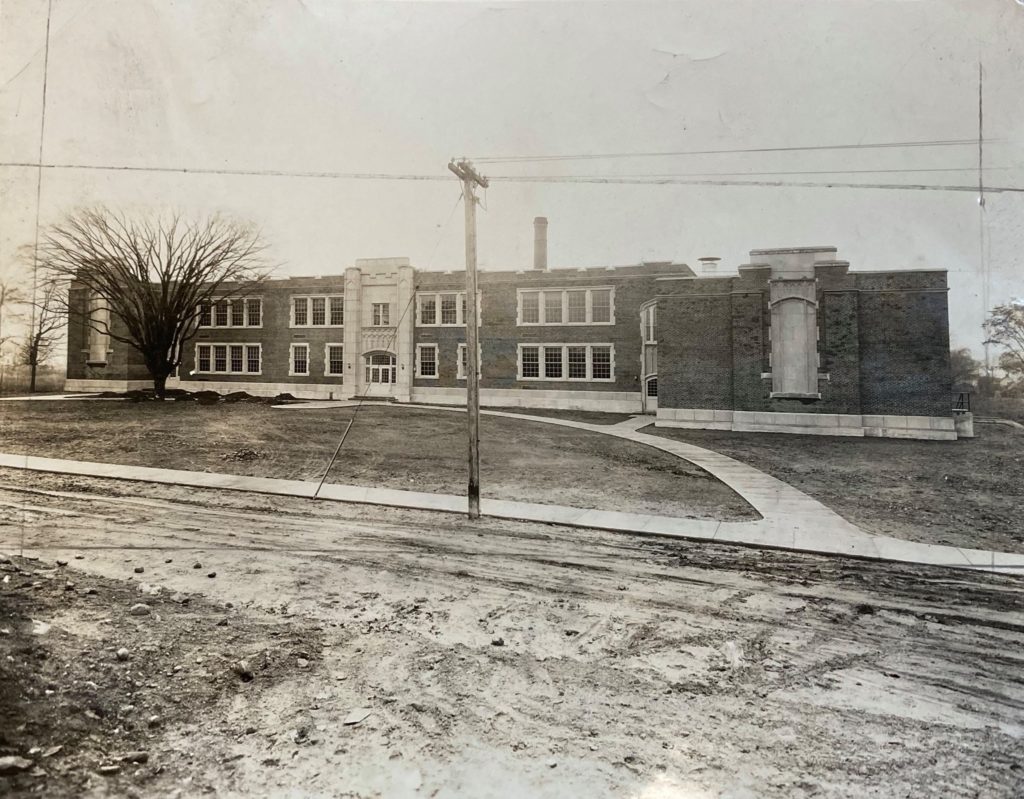
In the late 1920s, two other area schools, Mullin and Flower Ave, served the students of the city’s 5th Ward. However, it was during this time that Flower Ave School was closed.
Constructed in 1929-30 for $183,000, the new school replacing both was unofficially known as the 5th Ward School. It wasn’t until March 3, 1930, that it was officially named Sherman School after the Sherman family and their many contributions to the village, and then city, of Watertown, N.Y.
In the March 4, 1930, Watertown Daily Times article titled “The Sherman School,” credit was given to another well-known name in the history of the city–
That was a happy suggestion of Commissioner Delos M. Cosgrove that the new Fifth Ward school be named the Sherman School and the board of education is to be commended for adopting it. Few families have left an imprint on Watertown that the Sherman family has and few have contributed more to the development of the city.
The new Sherman school is located in a section of Watertown where there are many historic names. There is Woodruff Street, named from that sturdy resident of old Watertown who built the Woodruff House, Paddock street from the Paddock family who contributed the first president to the Jefferson County bank, Clinton street from Governor DeWitt Clinton, Flower avenue from Mr. Anson R. Flower and Ten Eyck street from Egbert Ten Eyck, a century or more ago a member of congress from this city.
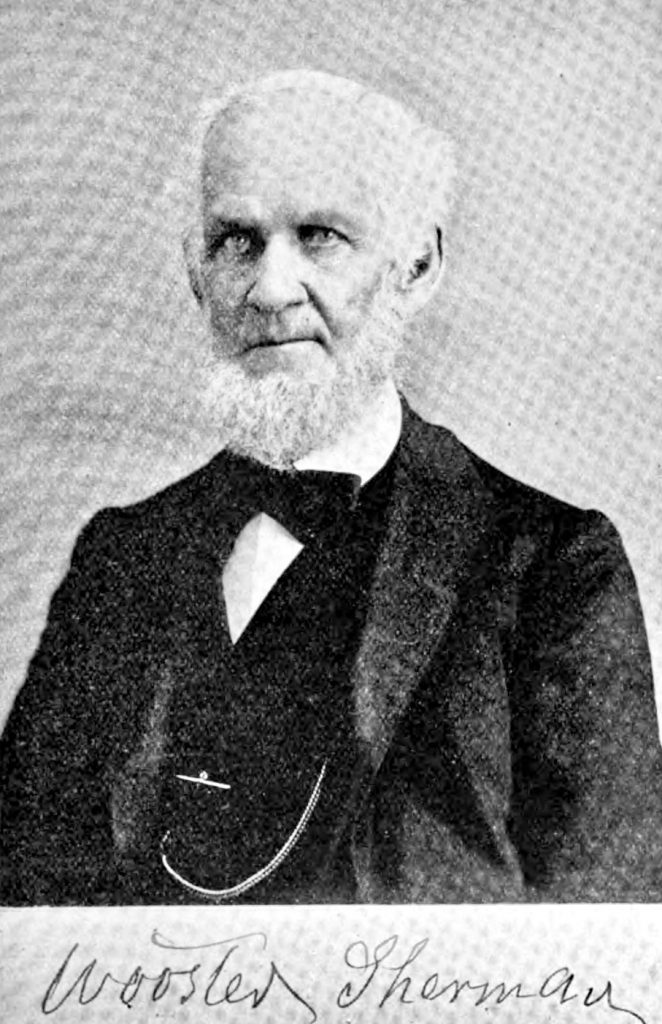
The Sherman Family Legacy
Phineas Sherman moved to Watertown from Newport, N.Y., in 1810, five years after the formation of Jefferson County. He established a paper mill but died shortly afterward and was buried in the old Court Street Cemetery. His remains were later moved to Brookside Cemetery in 1905 after the construction of the new City Hall.
George Corlis Sherman was his son, a lawyer who became a senator and spent many years partnered with Judge Robert Lansing. Wooster Sherman, a well-known banker organizing the Watertown Savings Bank, was Phineas Sherman’s son. George Corlis Sherman had a son, George H. Sherman, who organized the St. Regis Paper Company. These are only a few of the many Shermans with rich ties to the city the school is named after.
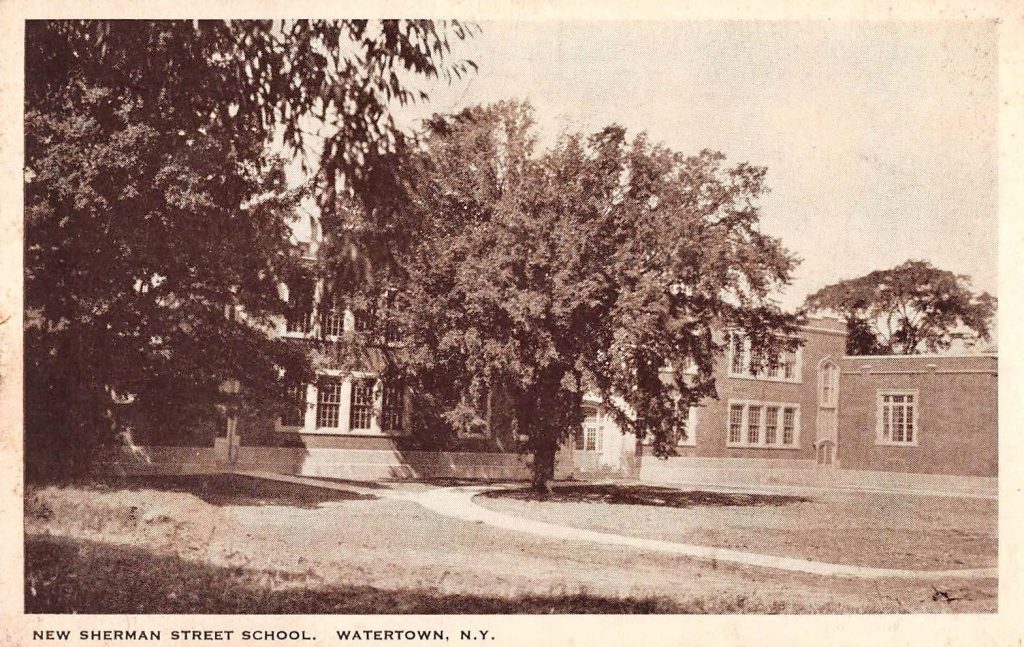
Sherman Street School Ready By Fall 1930
John B. Charlebois was the contractor hired to build the new Sherman Street School. By April 4th, Superintendent of Schools Raymond C. Burdick informed the public that the building was a month ahead of schedule and would be completed about August 1 and ready for use for the fall term in September.
Originally, it was planned that the Flower School would be abandoned, and its students, along with those from Mullin, would attend the new Sherman Street School. There would be two classes in all grades from the first to the sixth, with a faculty of about 12 and a principal.
However, the boundaries for enrollment had to be redrawn. According to the April 4, 1930 article–
The following boundary line between Sherman school and Arsenal school to be Clinton and Cross streets to the railroad tracks, and further resolved that any pupils attending Mullin street school, residing between Stone and Clinton streets attend the Sherman school, unless the grade becomes so large they must go to Arsenal.
As it turned out, in addition to the Arsenal Street School, some students were required to attend Academy Street School due to unprecedented growth. During this time, Boon Street School was also undergoing the construction of additional space.
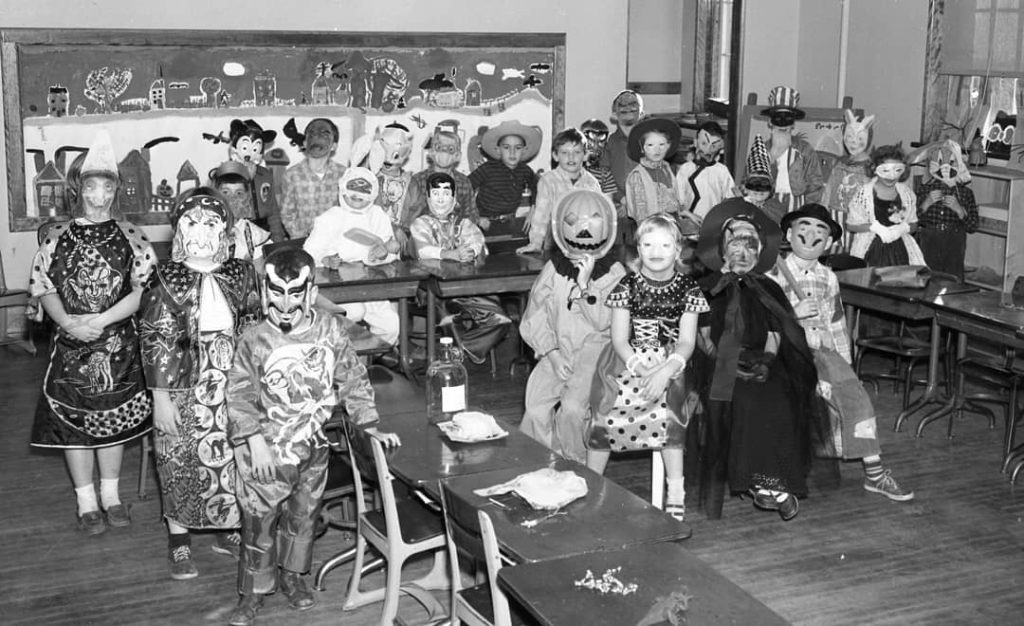
On November 20th, over two months after it officially opened, the new Sherman Street School was officially dedicated. Dr. J. Cayce Morrison, assistant state commissioner for elementary education, state education department, Albany, selected for the dedicatory address “Our Faith in Public Schools.”
Mrs. Mitchell, who served as principal, spoke of the unusual surroundings of the new school and expressed hopes its natural setting with its trees could be preserved. She also suggested that the Sherman Parent-Teacher Association consider landscaping the grounds.
“Sherman Street school,” she continued, “is a continuation of two schools that have been in existence for a number of years—Mullin and Flower avenue schools. I would rather rededicate the things that the two schools have always stood for—truth, honor, fair duty and service for others; all that goes to make for good citizenship.”
Today, Sherman Street School is the last remaining school still in operation of its era.
